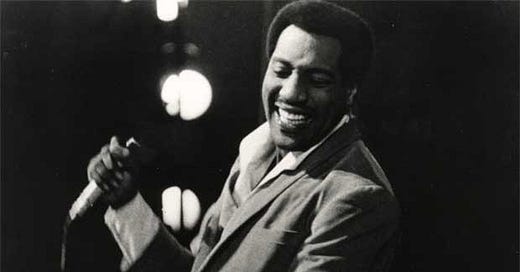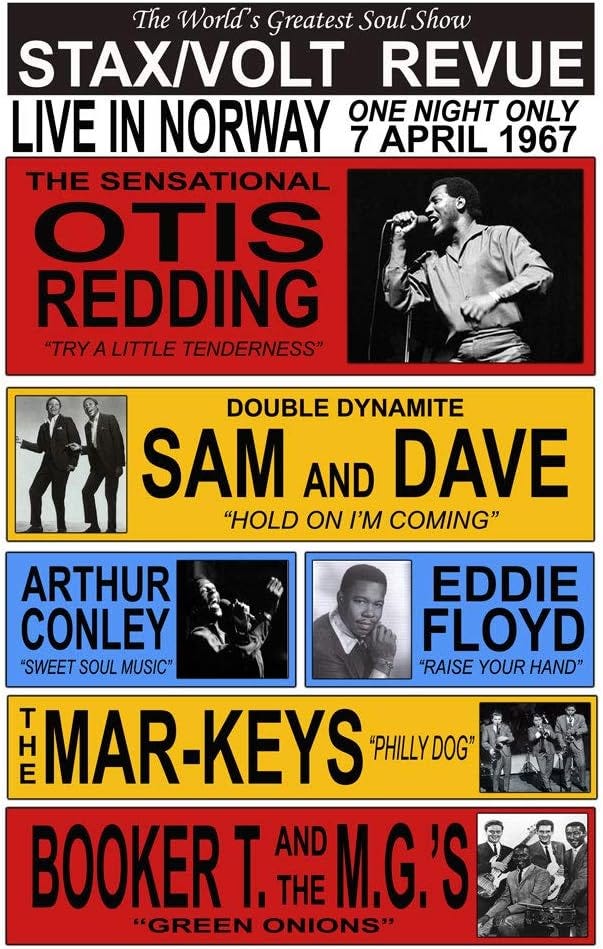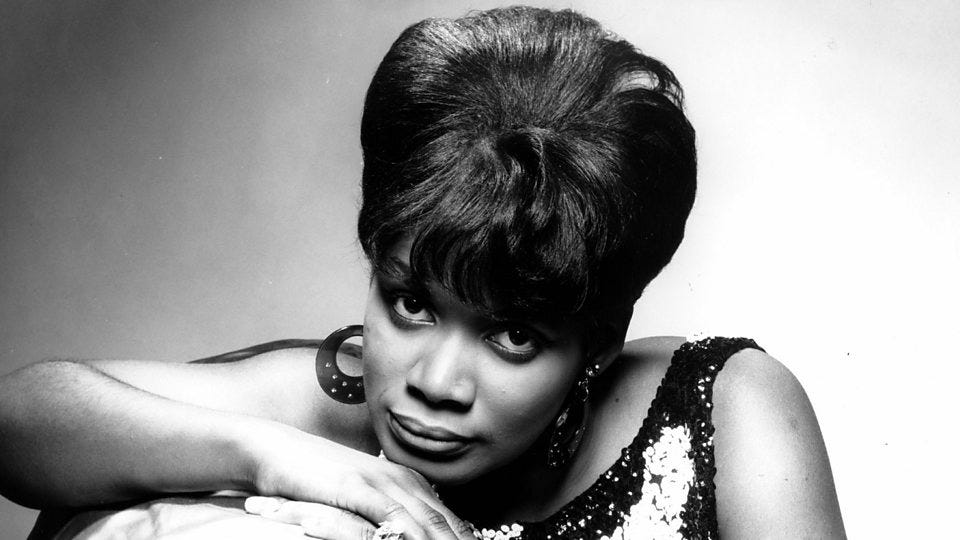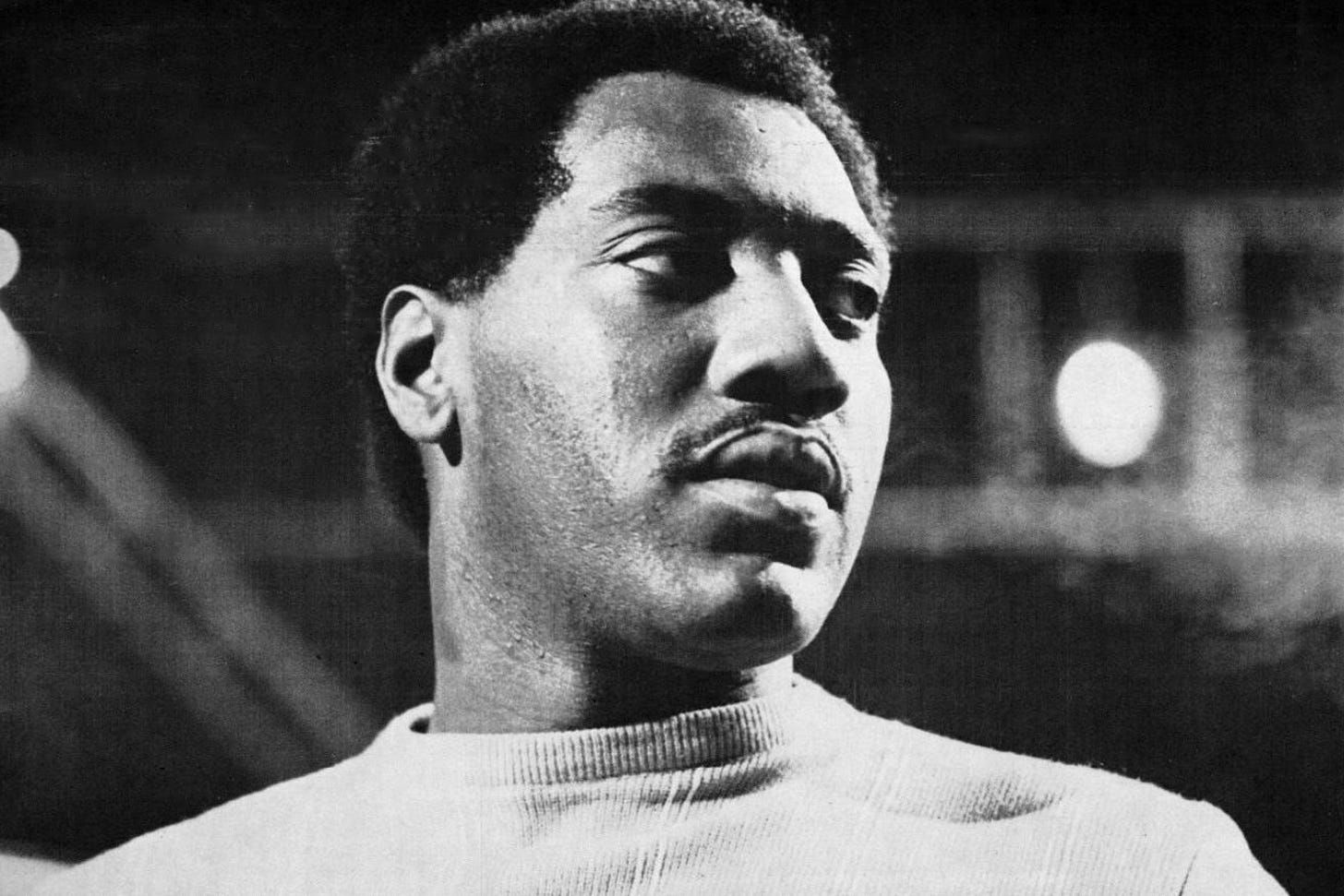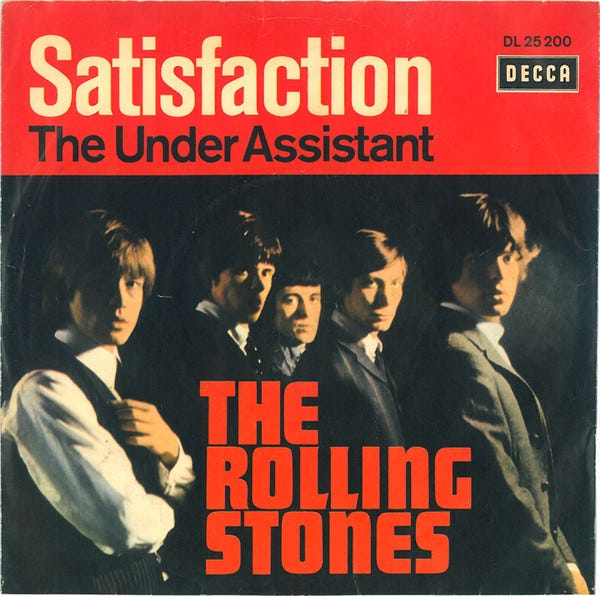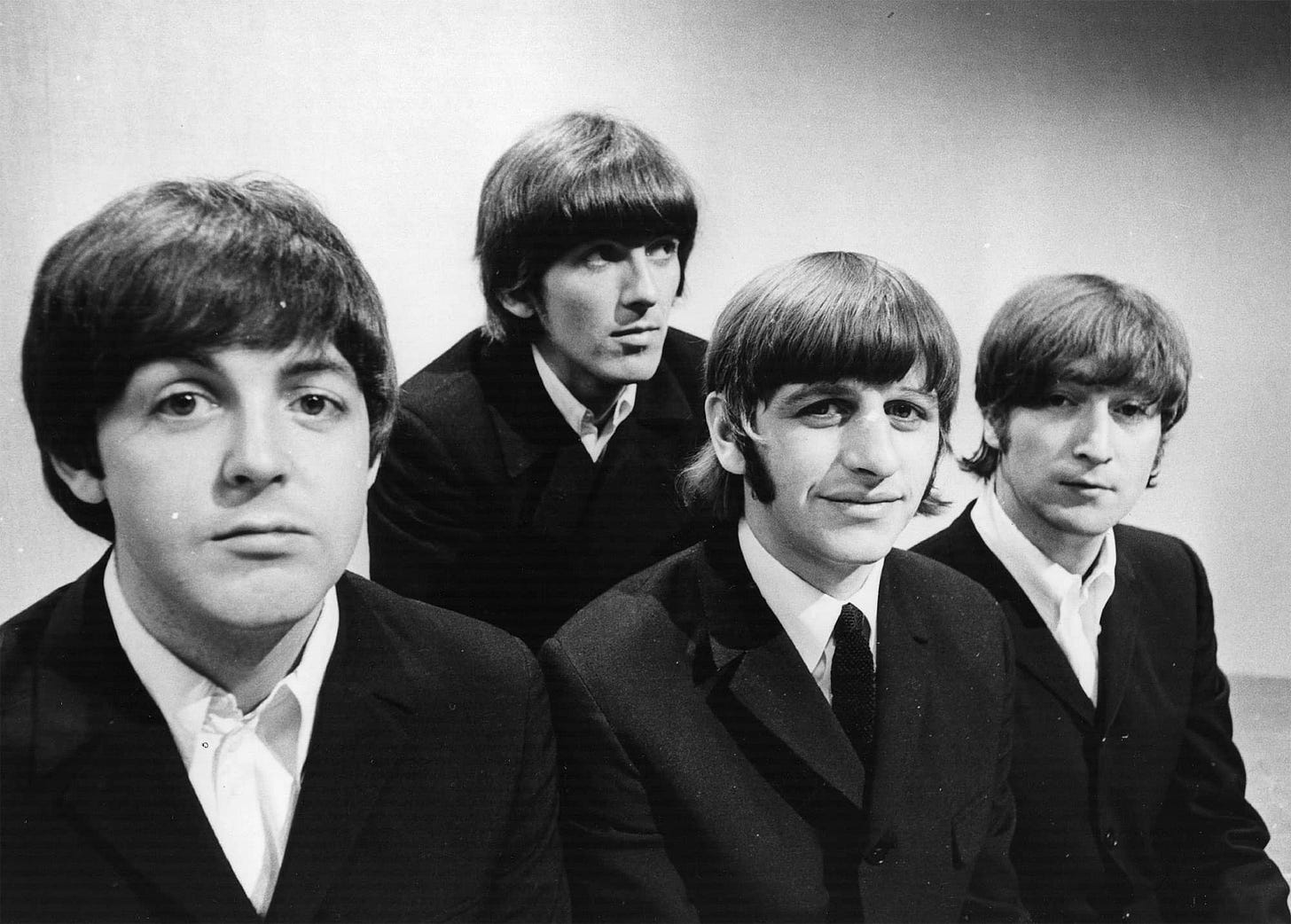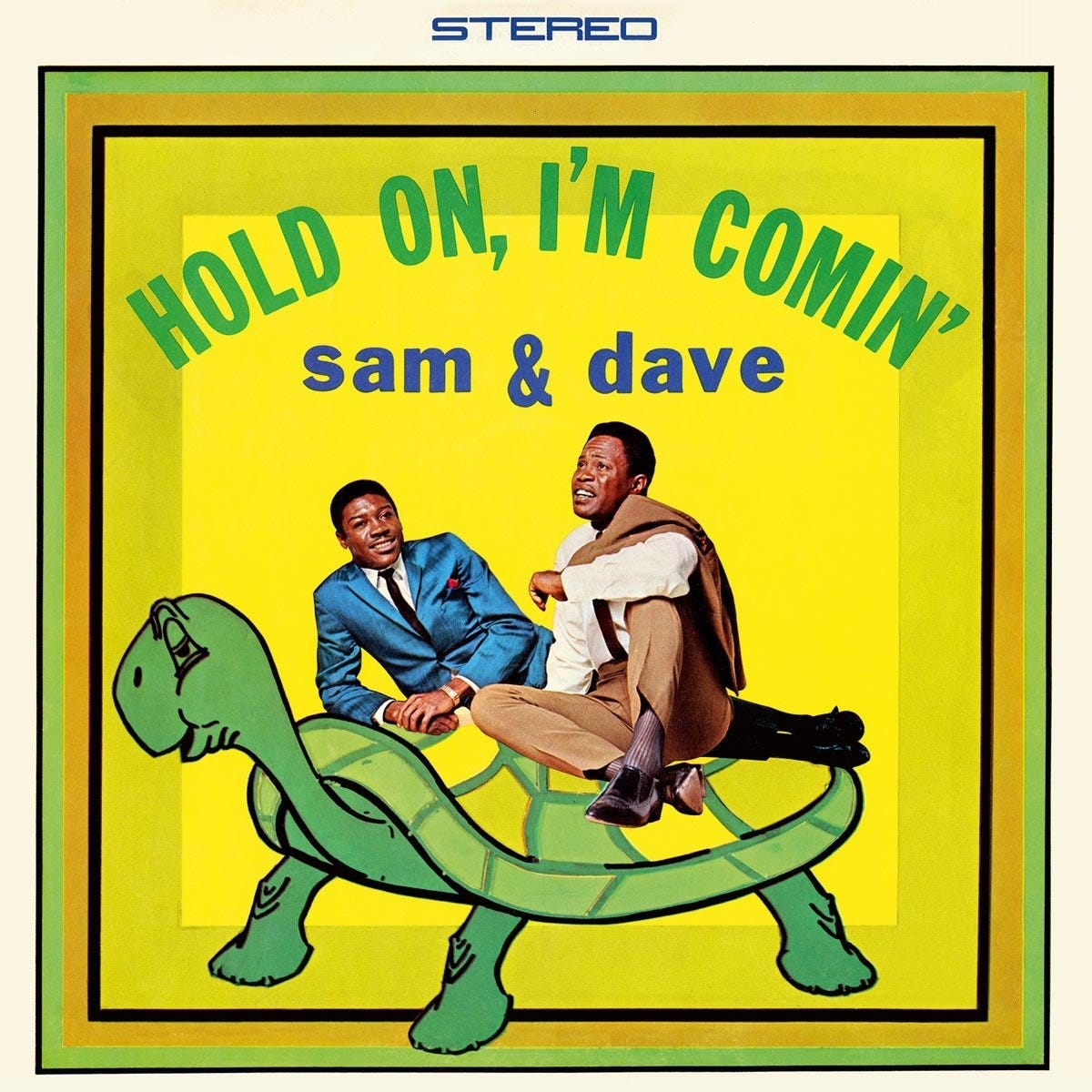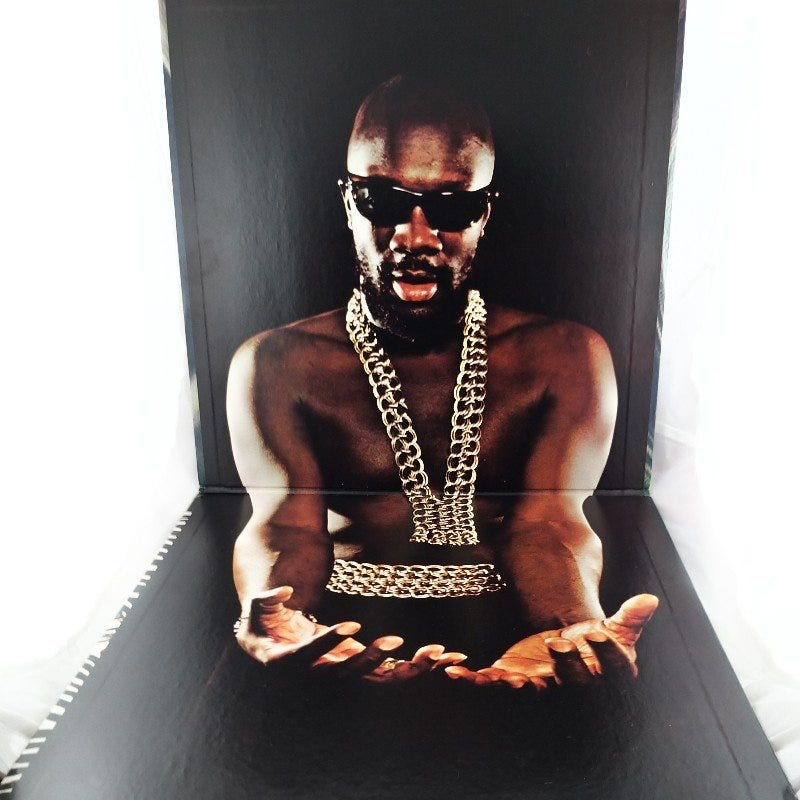Otis Redding, pictured in 1966
The Intro - Stax On Tour
Flyer for a date on the 1967 Hit The Road Stax tour of the UK
In 1967, in the Southern States of the USA, the Jim Crow racial segregation laws meant that mixing between Black and White people, frowned upon all over America, was actually as illegal as in apartheid South Africa.
That year, the stars of Stax Records of Memphis, Tennessee toured the UK and Europe. and found a very different world waiting for them.
Otis Redding, Sam And Dave, Carla Thomas, Booker T and the MGs and The Mar-Keys went down an absolute storm - the Motown revue tours of 1965 and 1966 (check!) had played to packed houses and indicated that British and European audiences wanted to see live the Black stars they had previously only heard on record.
It was a very happy tour for the Stax artists, most of whom had never been to the UK before, and were amazed at the level of freedom they had compared to back home.
They could eat in any restaurant they liked, drink in any bar they wanted and use any public toilet they chose. Incredible though this may seem, this was not normal in the southern States.
“There was a club called the Bag O’Nails. And we had a pre-show, me and Booker. We were kinda practising. And I said ‘Booker - who is that over there at the table?’
He said ‘My God, that’s Paul McCartney!’ It was so cute. He was just so cute, he was just enjoying himself” - Carla Thomas.
The connections between Stax artists and the Big Two English groups went back a few years. Each side listened to, dug and was influenced by the other.
Pain In My Heart
“One day, I was hanging out there at Stax and a car pulled up from Georgia and a big, energetic young man got out and started unloading amplifiers and suitcases for a session.” - Booker T Jones
At this time Otis Redding was the singer in the band put together by guitarist Johnny Jenkins back in his home town of Macon, Georgia. Johnny had an audition scheduled at Stax’s Memphis studio, but couldn’t drive, so he took Otis along with him to drive him on 500 mile trip.
The session with Jenkins did not work out but with paid-for studio time remaining, and this larger-than-life singer lobbying all day for an opportunity to show what he could do, they asked him what he wanted to sing. He took the house band through a song of his own composition, These Arms Of Mine, and contemporary accounts from the likes of Steve Cropper all agree that Otis blew everybody away.
Side One, Track One of Otis Redding’s first album, released in 1964, is a candidate for the most effective four-bar intro in the whole of soul music. Sparse and menacing, it forms a statement of intent and hints at a more dangerous world than that inhabited by the records of Sam Cooke, who Otis admired.
When on tour in the USA, the Rolling Stones, still not confident in their songwriting abilities, were in the habit of exploring local record stores for potential tunes to cover, and came across Otis’s first album.
Otis had recorded it as a reworked version of the Irma Thomas hit Ruler Of My Heart, written by Allen Toussaint although originally credited to Otis and his manager Phil Walden.
The Stones version appears on their second album, which contains nine covers out of the twelve tracks, with the three fillers being Jagger-Richards compositions of questionable quality.
They were later to borrow the look and feel of Pain In My Heart for one of their subsequent compositions Heart Of Stone (check out the intro of the latter) , which is a big improvement on their rather tentative cover version, which contains at least one mistake (a bum chord around 1:27, music nerds!)
A fine Otis record, but not one of the Stones’ finest moments.
That’s How Strong My Love Is
Interviewer: “Why do you think white blues performers are more successful than their black counterparts :
Otis: "Because the white population is much larger than the colored"
(Hit Parader magazine)
Written by Roosevelt Jamison and first recorded by O V Wright, while owing a huge debt to Smokey Robinson’s “Who’s Loving You”,
Otis’s version appeared on the album “The Great Otis Redding Sings Soul Ballads”. He takes what is already a sultry slow burner and slows it down just a tad, but what a difference it makes!
The Stones recorded a version for Out Of Our Heads, their blackest-sounding album and also their first great album, marking the start of a rich vein of form, following many of the same influences as Otis and treating them in much the same way – not as a template to be slavishly followed, but as the starting point for the creation of a sound uniquely their own.
They speed That’s How Strong My Love Is back up to the pace O V Wright set, a smart move as it suits the band’s style much better this way, and marks a big improvement on their Pain In My Heart. You can clearly hear how much better the band has become in the year between these two recordings.
Incidentally Millie Jackson (of My Boy Lollipop fame) also cut a tremendous version of the song. The Hollies, not so much - not really their style.
Satisfaction
“I love Otis’s version of ‘Satisfaction’ (laughs).
That knocks me off-a my socks” - Keith Richards
In 1965, Steve Cropper and Booker T Jones suggested to Otis that he record a Rolling Stones song.
They reasoned that since the Stones had just recorded their THIRD Otis cover I’ve Been Loving You Too Long, and that this upstart English band were big fans of black music in general, and of Otis Redding in particular, it would be a good idea to try and attract some of their fanbase.
The song chosen was (I Can’t Get No) Satisfaction. Given that this was the Stones’ biggest hit to date, this could be regarded as a bold move. Otis had reportedly never heard the song before, but this didn’t faze him at all.
When you listen to his version, this makes perfect sense. The words are mostlly improvised - its all about the feel. Otis has clearly not learnt the lyrics yet, or has not bothered with all of them, concentrating on the sound and the feel. Where he forgets a line, he just makes one up, possibly on the spot.
This is the sound of a man inhabiting a well-known song, interpreting it without preconceptions and producing a stunning version that is at least as great as the original.
Day Tripper
I like what these white rock'n'roll kids are doing. Sometimes they take things from us, but I take things from them, too - the things that are beautiful, and they do a lot of beautiful things" - Otis Redding
Otis’s covers of Beatles tunes Day Tripper and A Hard Day’s Night clearly demonstrate this philosophy.
On the latter he completely misses out the “When I’m Home” bit, focussing on the main “It’s Been A Hard Day’s Night” part. This is a damn shame as, frankly, his version doesn’t really work and seems to go on for much longer than its actual 4:16 duration.
His take on Day Tripper is far more successful. It seems to come in somewhere near the middle with the band already warmed up and with a full head of steam and the horn section riffing on I Can’t Turn You Loose. It never lets up for a second.
Respect / Drive My Car
Interviewer - I have a question for all the Beatles here. If you were sitting at home listening to record albums of other recording artists, who are some of the American recording artists you prefer?
John Lennon - “Otis Redding is one”
The Rolling Stones were a band originally built around playing American blues covers. Songwriting came later at the behest of manager Andrew Loog Oldham, and it was not unknown for Oldham to lock Mick Jagger and Keith Richards in a room until they had satisfactorily completed a song.
John Lennon and Paul McCartney, on the other hand, were writing songs together from very shortly after they met and by 1965 were well down the road to eliminating cover versions from their records completely.
They preferred to soak up the influences of the music they heard and let it come out naturally in the new songs they were writing. A prime example of this is the song Day Tripper, proudly taking pride of place as the first track on their 1965 Rubber Soul album.
Otis Redding’s signature tune is such a powerful song that it has become the signature tune for both Aretha Franklin and, later, Dexys Midnight Runners.
But covers of other people’s songs wasn’t on Paul McCartney’s agenda by this stage in the Beatles’ career.
George Harrison’s frantic, short opening burst on the guitar is the younger, screechier brother of the horn figure in the Otis tune.
The look and feel of the two tracks is very similar, but only apparent if you listen to the two tunes side-by-side. There’s no chance of being accused of plagiarism, which is obviously good news for George.
You Don’t Know Like I Know / Got To Get You Into My Life
“I heard Joe Tex, Wilson Pickett and Sam & Dave on the radio and thought, ‘Oh, wow, I’m going to do my version of that.” - Paul McCartney
Sam Moore and Dave Prater were a unique duo. Their early recordings were a fairly traditional mix of Dave’s lead baritone with Sam’s tenor harmonies. Signing for Stax, they worked with the in-house songwriting team of Isaac Hayes and Dave Porter, who were masters at writing songs with particular artists in mind. Tunes like You Don’t Know Like I Know utilised the pair’s vocal skills more equally and their career took off.
Their carefully rehearsed choreography on stage made them an electric act to witness live. Neither tips the hat to the other, they are basically two frontmen apparently elbowing each other for real estate on stage, yet always working together, always in synch.
“Got this great concept for the album cover, boys. Do you see what we’ve done there?”
On record, Soul Man and Hold On, I’m Coming quickly became standards then, and remain so now. The Hold On, I’m Coming album doesn’t have a bad track on it.
And Paul McCartney, the most inquisitive Beatle, was listening carefully.
Some commentators (notably Ian Macdonald in his indispensable Beatles-song-by-song guide Revolution In The Head) regard Got To Get You Into My Life as a Motown homage but I reckon the source here is the Southern soul of Memphis rather than the Northern sounds of Detroit.
The Beatles had covered soul songs before but they always played them very “White”, which is to say, in traditional Beat Group fashion. No horns, no organ.
Got to Get You Into My Life is their first proper stab at making a soul record. Five-piece horn section, grooving all the way through, in-yer-face vocals, shouty bit at the end. The fact that it was later covered by Earth, Wind & Fire speaks volumes of its reputation within Black Music circles.
Something Otherworldly
The inner sleeve of the “Isaac Hayes Movement” album which contains his incredible cover of “Something”.
In 1969 Abbey Road was the last album the Beatles recorded, and the Fab Four knew their time together was limited.
While it always seems that John and Paul were holding back on a few tunes with a view to recording them for their solo work, the same cannot be said of George Harrison, who came up with two of his finest works, easily standing tall next to anything Lennon and McCartney produced. Here Comes The Sun which opens Side Two is a beautiful, spiritual trip, whereas Something was a hymn to his then-wife Patti Boyd and is among the finest love songs ever written. It’s been covered over 300 times.
Apparently there exists a nine-minute version by The Beatles with added piano outro by John Lennon, which I’ve yet to be able to track down.
But if it’s better than the other well-known extended version of the song, I’d be very surprised indeed.
By this time, Isaac Hayes’ songwriting partnership with David Porter had come to an end and Stax were pushing him as a major solo artist.
His second, massively popular album Hot Buttered Soul featured long, orchestral arrangements of other people's songs, and Hayes continued with the formula on The Isaac Hayes Movement, with the album concluding with a stunning, beautiful and at times alien-sounding eleven minute variation on Harrison’s theme.
It’s well worth a proper listen. If you were born in the first couple of years of the 70s, check your parents’ record collection.
There is a very good chance this track is responsible for your birth.
The Outro
I hope you’ve enjoyed reading this list - if you have, then please feel free to subscribe (for free).
I’d love to hear anything I’ve missed, or indeed your opinion on of the songs I’ve included, in the comments below.
In particular, if you know of a link to the aforementioned long Beatles version of Something then I will be forever grateful!
Remember that this list - indeed, everything on this substack - is the opinion of an enthusiastic fan and is in no way meant to be definitive.
All the originals, covers and inflencing tracks mentioned here are included in this Spotify playlist - give it a spin! Everything is conveniently arranged in pairs and groups so you can compare and contrast the versions.
I’m off to listen to some Isaac Hayes now. Catch you next time.

